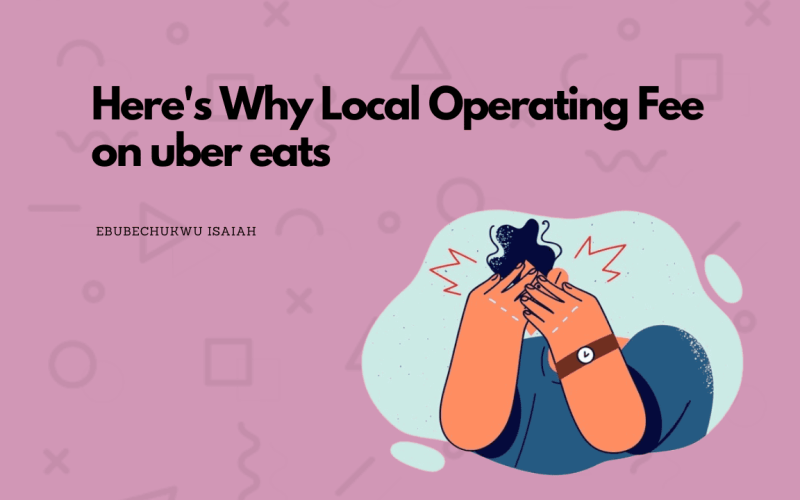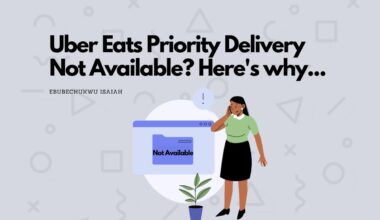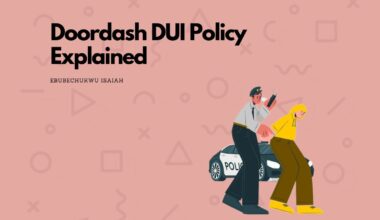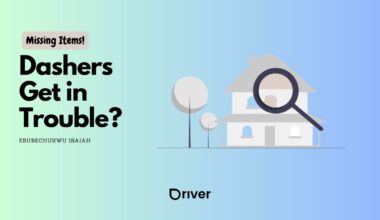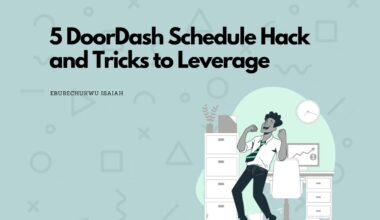It’s Monday morning, and you’re about to start your daily routine when you’re suddenly perturbed by an Uber Eats notification—yes, it’s another fee.
The local operating fee is one of those charges that has graced the internet. In this article, we’ll demystify what this fee is, what it entails, how it originated, and most importantly, share tips to minimize your expenses while ordering from Uber Eats
The Why Behind Uber Eats Local Operating Fee
The local operating fee introduced by Uber Eats is a direct response to increased regulatory costs imposed on third-party food delivery platforms.
This fee, which is collected by Uber and not considered a gratuity, is designed to offset the expenses associated with new regulations, particularly those related to worker compensation and benefits.
In Seattle, the local operating fee manifested as a $5 charge added to every Uber Eats order.
This significant increase was implemented specifically to address the city’s new “PayUp” legislation, which mandates a minimum wage and other benefits for gig workers delivering meals, groceries, and packages.
The introduction of this fee has led to a substantial increase in the overall cost of food delivery for consumers.
For example, a GeekWire reporter found that the fees on a $44.90 food order more than doubled from $8.47 in September to $18.27 after the implementation of the new fee. This dramatic increase in delivery costs has raised concerns about the accessibility of food delivery services for many customers.
Uber Eats is not alone in implementing such fees.
Other delivery platforms like Instacart and DoorDash have also made changes to their pricing structures in response to the new regulations.
Instacart, for instance, added new fees for customers and reduced its service operation footprint due to the significant increase in operating costs under the new regulation.
It’s important to note that while these fees are intended to cover increased operational costs, they may have unintended consequences.
Uber has stated that the new regulations and resulting fee increases could lead to higher prices for consumers, fewer orders for restaurants, and reduced work opportunities for delivery drivers.
The company argues that these changes may price out many Seattle residents from accessing food delivery services altogether.
The implementation of local operating fees highlights the complex interplay between regulatory efforts aimed at protecting gig workers and the economic realities of operating food delivery platforms.
As cities like Seattle continue to implement new labor laws for gig workers, it’s likely that similar fee structures will become more common across various food delivery services in affected areas.
Impact of Seattle’s ‘PayUp’ Law
Seattle’s ‘PayUp’ law, which went into effect on January 13, 2024, has had significant and controversial impacts on the gig economy ecosystem in the city.
The law requires app-based delivery companies to pay drivers a minimum of $26.40 per hour, plus mileage and before tips.
While intended to improve working conditions for gig workers, the law has led to unintended consequences for various stakeholders.
For delivery drivers, the impact has been mixed. Some report higher guaranteed pay and less reliance on tips.
However, others claim their earnings have drastically decreased due to fewer available orders. One driver reported a 50% drop in income, forcing them to take on additional part-time work.
The Seattle Rideshare Drivers Association noted that some drivers have stopped making deliveries in Seattle altogether.
To offset the increased labor costs, delivery companies like DoorDash and Uber Eats implemented a $4.99-$5 fee on orders.
For Uber Eats, this means introducing the local operating fee.
This fee applies not only to orders within Seattle but also to some customers outside the city ordering from Seattle merchants.
As a result, order volumes have decreased significantly:
- DoorDash reported 30,000 fewer orders on their marketplace within just two weeks of the law’s implementation.
- Uber stated that couriers are spending 30% more time waiting for delivery requests compared to before the ordinance.
The reduced order volume has had a ripple effect on local restaurants.
Some establishments reported a 30% decline in third-party delivery business, which typically accounts for about 30% of their overall sales.
This decrease in orders has led to lost revenue and exposure for Seattle businesses, with estimates suggesting they missed out on more than $1 million in revenue.
The controversy surrounding the ‘PayUp’ law has prompted discussions about potential revisions.
City Council President Sara Nelson acknowledged the need to find a better solution and is working with stakeholders to address the unintended consequences.
Some proposed compromises include reducing the minimum wage per minute from 130% to 110% of the city’s minimum wage and providing a $0.35 per mile reimbursement for vehicle expenses.
As the debate continues, the ‘PayUp’ law serves as a case study in the complexities of regulating the gig economy, highlighting the delicate balance between worker protections and maintaining a viable business ecosystem for all parties involved.
10 Tips to Reducing Charges on Uber Eats
To reduce charges on Uber Eats in Seattle, customers can employ several strategies to mitigate the impact of increased fees, including the new $5 local operating fee:
Consider ordering during off-peak hours: Some delivery services may offer lower fees during non-peak times to encourage more orders
Opt for pickup instead of delivery: By choosing to pick up orders directly from restaurants, customers can avoid delivery fees and the local operating fee entirely.
Subscribe to Uber One: This membership program offers benefits like $0 delivery fees on eligible orders and 5% off eligible pickup orders. While it has a monthly cost, frequent users may find it more economical in the long run.
Take advantage of promotions: Uber Eats regularly offers promotional discounts and deals. Customers should keep an eye out for these offers, which can significantly reduce overall costs.
Order from restaurants closer to your location: Delivery fees often increase with distance. Choosing nearby restaurants can help minimize these charges.
Combine orders with friends or family: Placing larger orders can help spread out the fixed fees across more items, effectively reducing the per-person cost.
Use alternative delivery services: Compare prices across different platforms like DoorDash or Grubhub, as they may have different fee structures or promotions.
Order directly from restaurants: Many local establishments offer their own delivery services or online ordering systems, which may have lower fees than third-party platforms.
Look for restaurants that absorb fees: Some restaurants choose to absorb part or all of the delivery fees to remain competitive, potentially offering lower overall costs to customers.
Utilize credit card rewards: Some credit cards offer cashback or points for food delivery services, which can offset some of the costs.
As an Amazon Associate, I earn a small commission from qualifying purchases. Learn more about this.
